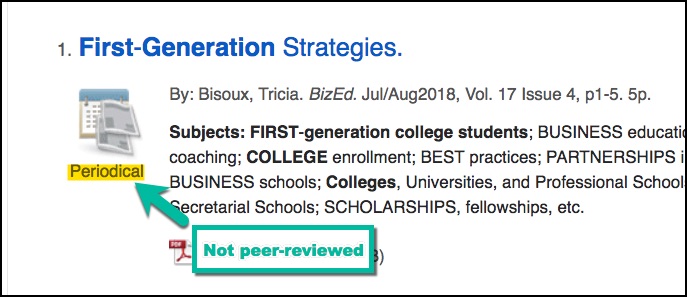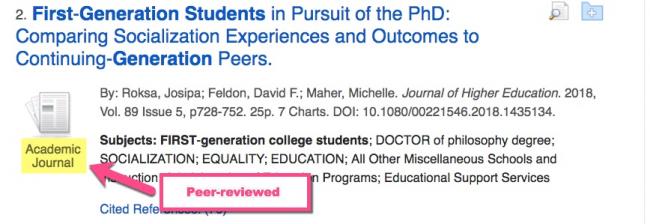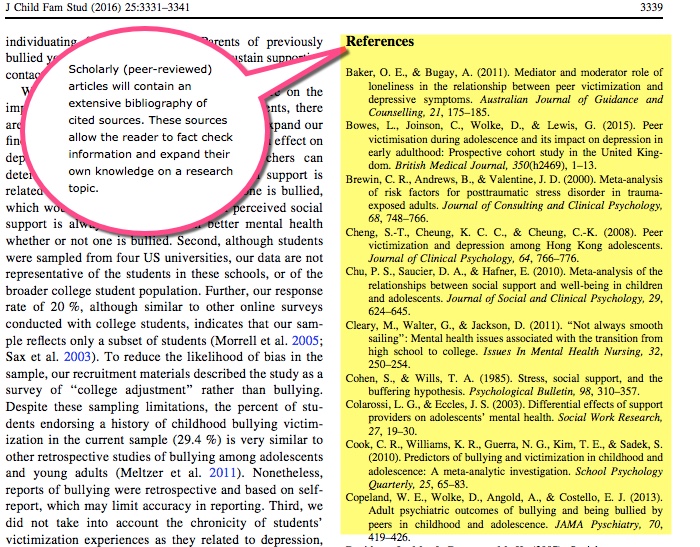Using Scholarly Articles
There are several ways to determine whether or not an article is scholarly or peer-reviewed.
1) One way to know that an article is scholarly or peer-reviewed is if the database gives a visual indication as to whether an article is scholarly. For example, the second image below indicates that the article is scholarly, unlike the first image, which indicates it is from a periodical that is not peer-reviewed.
It's important to note, however, that this visual indication does not definitively mean the article is peer-reviewed. In fact, some articles published in peer-reviewed journals may not actually be peer-reviewed. For example, book reviews, editorials, and news items do not undergo the same review process as research articles. Therefore, even if the database gives a visual indication that the article is from a peer-reviewed or scholarly journal you still need to ask the questions given below to ensure that it is a scholarly journal article.

2) The purpose of a scholarly article is to inform and disseminate original research to scholars. Readers should ask the following questions when trying to determine if an article is scholarly (peer-reviewed):
- Who are the authors?: Generally researchers or scholars in the academic discipline and/or field.
- How is it written?: Scholarly articles contain vocabulary that is technical and specialized according to discipline; audience is generally scholarly peers in that field of study.
- What does it look like?: Scholarly articles may include quantitative data in the form of graphs, charts, and tables supporting research; delineated sections: abstract, literature review, methodology, results, conclusion, and bibliography.
- How are the sources cited?: Scholarly articles contain an extensive bibliography and footnotes which are formatted according to research discipline (e.g. MLA - Humanities; APA - Social Sciences, CSE - Sciences).





